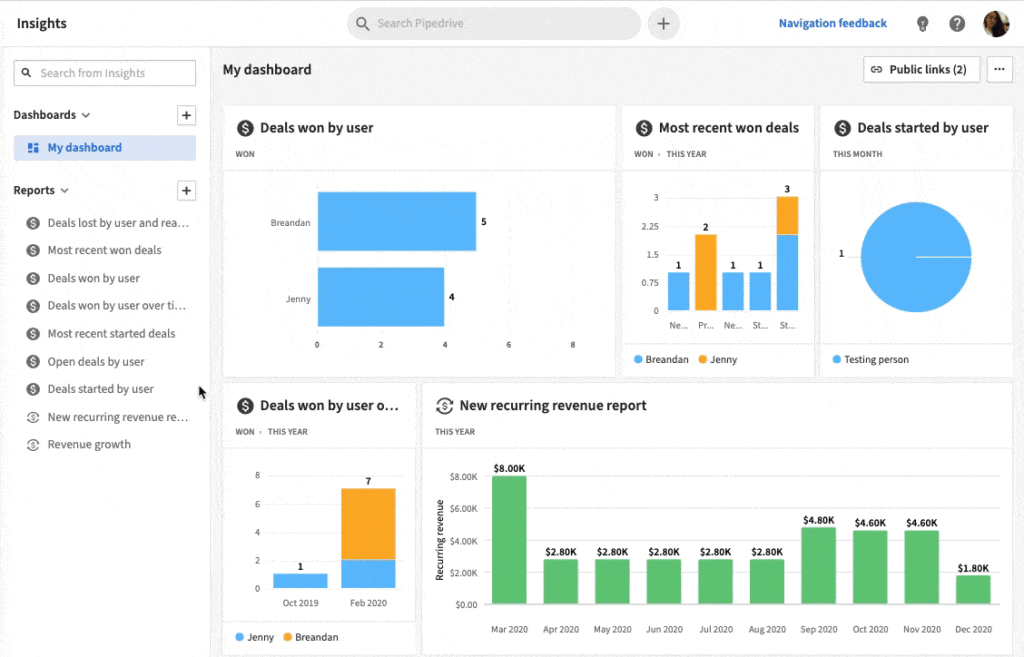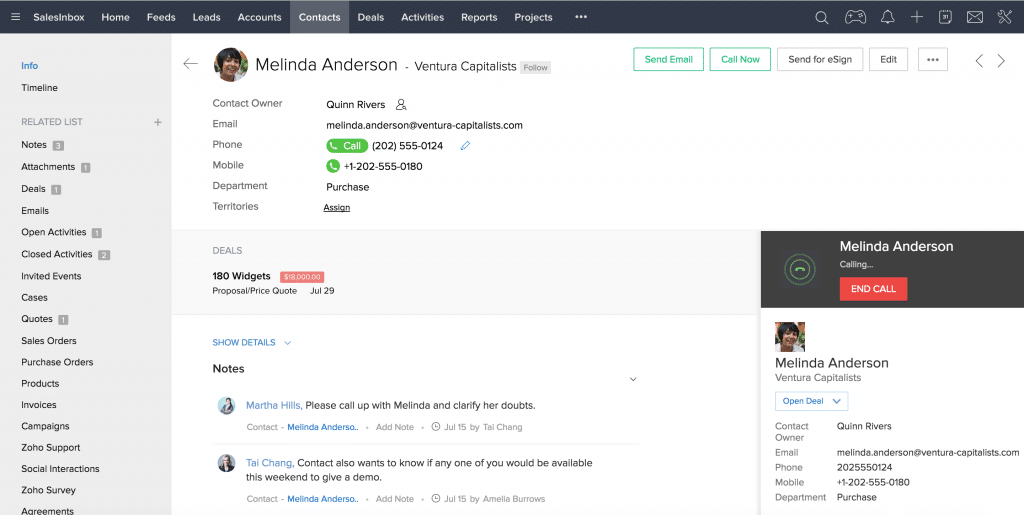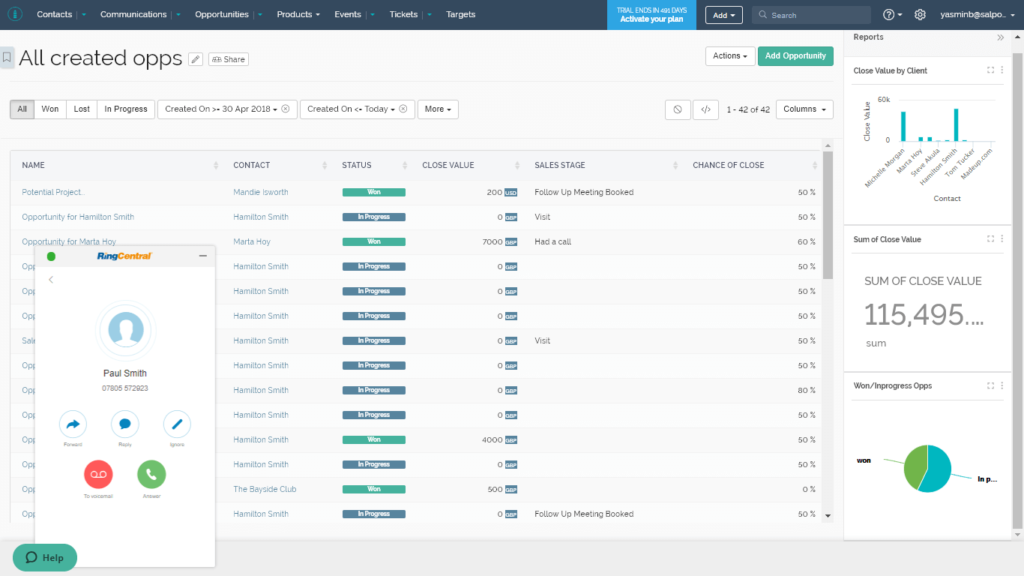If you want to succeed in sales, you have to learn to adapt.
From emerging technologies to new methodologies, salespeople are (rightfully) always on the hunt for new ways to close deals.
You don’t have to look much further than extraordinary situations like COVID-19 as an example of reps shifting their strategies.
The pandemic has brought to light some big-picture questions. For example, is it possible to succeed solely via virtual sales? How much do face-to-face interactions really matter to customers?
Enter the debate of inside sales versus outside sales.
In this guide, we’ll look at:
- The differences between inside and outside sales
- Inside sales: benefits, drawbacks, and making it work
- Outside sales: benefits, drawbacks, and making it work
- When is inside sales appropriate vs outside sales?
Up your sales game and close more deals with this free cold outreach playbook. ☎️
Inside sales vs outside sales: What’s the difference?
To kick things off, let’s break down what “inside” and “outside” actually mean in the context of sales.
Inside sales represent remote sales in which salespeople never actually meet in person with leads and prospects. Such salespeople rely on a combination of cold calling, emails, and digital meetings to nurture leads and close deals.
Think of a modern sales team that’s hitting the phones and spending the bulk of their day plugged into sales software: that’s inside sales.
On the flip side, outside sales represent in-person sales. These salespeople go out “into the field” to meet prospects and negotiate deals face-to-face. Whereas inside salespeople will spend most (if not all) of their time in-house, travel and one-on-one meetings represent a significant chunk of an outside rep’s schedule.
Inside sales |
Outside sales |
|
|
Startups and smaller teams typically do most (if not all) of their sales “inside.” This is especially true for software as a service (SaaS) companies that are tech-savvy and can easily demonstrate their product(s) virtually to leads and prospects.
Although outside sales may seem old-school to some, meeting and closing in-person is still essential to certain industries.
For example, let’s say you’re dealing with massive contracts, big-spending clients (think: banks and financial institutions) or an expensive, physical product (think: building materials and suppliers, energy solutions). You’d be hard-pressed to find people willing to commit to six or seven-figure deals without meeting face-to-face.
Inside sales: Benefits, drawbacks, and making it work
In the showdown between inside vs. outside sales, determining which is “better” depends on factors including your product, team size, and budget. We’ll tackle the ins and outs of inside sales first.
What are the benefits of inside sales?
First thing’s first: remote sales is much, much faster to scale.
For example, modern sales software makes it easier than ever to put the process of messaging and following up with leads on autopilot. Coupled with a communications platform (like RingCentral) that makes it a cinch to move from emails and live chat to phone calls and video meetings, inside sales is naturally speedier.
In short, remote salespeople have the advantage to both prospect and reach out to leads faster. This translates into higher sales quotas and the opportunity to get your product in front of more people.
With inside sales, there are also fewer question marks around what’s working and what isn’t in terms of your sales strategy. Digital communication leaves a sort of “roadmap” of what it takes to close any given deal.
For example, sales software such as a CRM can keep track of your most successful salespeople and outreach methods. Meanwhile, call-tracking analytics built into tools like RingCentral or other cold calling software can clue you in on how much your reps are calling, how long their conversations are, and even which phrases help you convert:

Lastly, inside sales aren’t restricted by travel or the geography of your customers in more traditional sales territory plans. Meeting with international clients can be done online, eliminating the need for pricey travel bookings. This not only opens you up to potential customers anywhere and everywhere, but also means that the “cost” of your meetings are little more than your reps’ time.
What are the downsides of inside sales?
Let’s be honest: it’s much, much easier to ghost someone digitally than it is in person. Letting a suspected sales call go to voicemail or ignoring a cold email simply requires inaction on your leads’ part. Without being face-to-face, people can simply say “no” or go cold without much of an explanation.
So while inside sales can cover more ground, remote reps may also deal with more tire-kickers and convert fewer customers based on sheer volume.
Also, building initial relationships with clients can be difficult via email or text alone. Although calls and video meetings can certainly do the job, some clients with an older-school mentality might see a lack of in-person meetings as a deal-breaker.
What are the most important tools for inside sales?
It’s not a stretch to say that much of a remote rep’s success depends on their sales software. There’s a variety of must-have tools for inside sales that we’ve highlighted below.
A communications platform
Bear in mind that every prospect has a different preference in terms of how they communicate.
Email. SMS. Video meetings and phone calls. You name it.
That’s why it’s so important for inside sales professionals to have a reliable outbound communications platform at their fingertips. Tools like RingCentral allow you to meet with leads and customers at a moment’s notice, including initiating instant video calls and sales demos.
Tools like phone access and video meetings are crucial for remote reps. According to recent customer experience statistics, 50% of consumers still want to talk to an actual flesh-and-blood person prior to making a major purchase. Just because you’re behind a screen doesn’t mean you can just rely on emails. And even though video conferencing is exploding in popularity, sales reps will still (at least in the foreseeable future) need a phone.
Beyond communicating with customers, sales teams need to talk to each other too. From having weekly sales meetings to updating each other on deals in a group messaging thread, a good communication platform is crucial for encouraging teamwork.
A CRM
CRM (customer relationship management) tools represent the central hub of your business relationships.
For example, a CRM can keep track of your complete prospecting histories including phone calls, emails, and personal notes. In-depth analytics allow both yourself and sales managers to see the status of your deals and overall team performance, cluing you in on where your sales team can improve. Below is an example of the analytics and sales KPIs that can be found in Pipedrive:
Ideally, your CRM should integrate with your communications platform so you can track your customer relationships and dial your prospects in the same place.
For example, RingCentral integrates with Pipedrive, Zoho CRM, and many other CRMs to automatically log incoming calls and make outgoing ones:
Here’s another example of RingCentral’s integration with Salpo CRM, showcasing which stage each deal is in and giving reps a one-stop-shop to run down their to-do lists and contact lead:
Sales enablement tools
It’s well-documented that much of an inside rep’s time is dedicated to activities that go beyond actively selling.1 This includes prospecting, qualifying leads, and other account-related tasks:
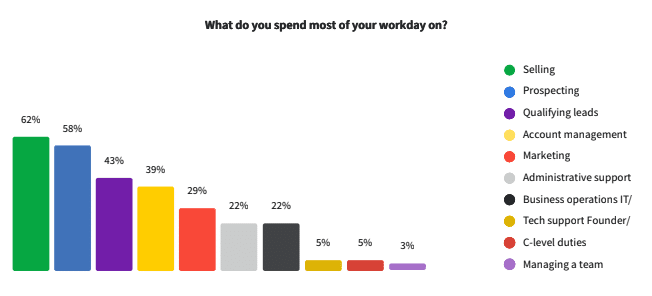
As such, there are tons of sales enablement tools out there to help reps speed up the process of doing deals virtually. This includes meeting schedulers, automated tools that qualify leads, and contract generators, like Simul:
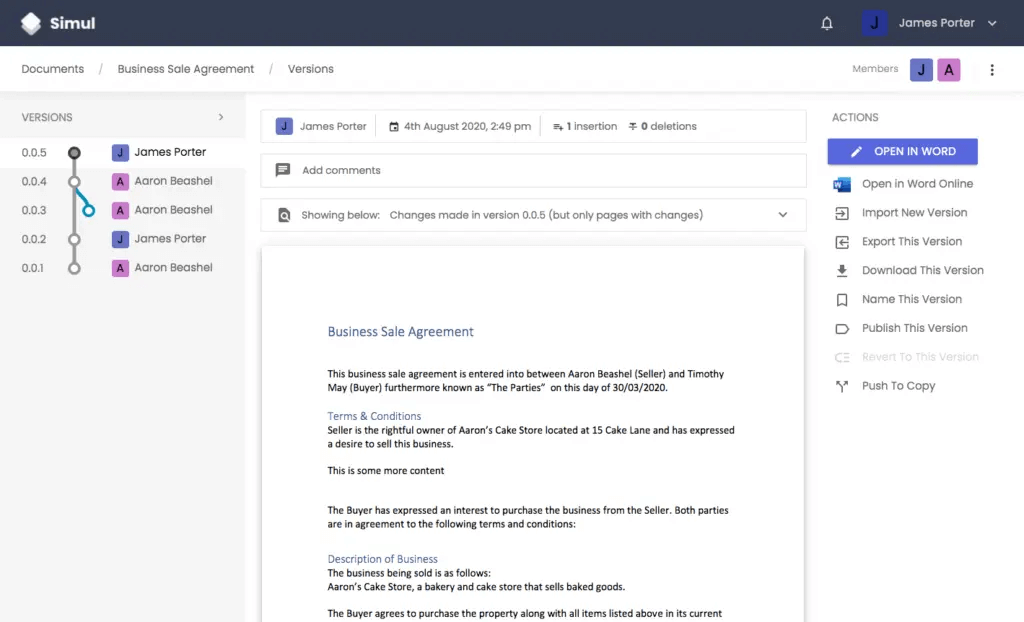
A robust, reliable software stack is key to inside sales, allowing reps to seamlessly move from each stage of a deal while keeping customers engaged every step of the way.
🕹️ Get a hands-on look at how RingCentral works by booking a product tour:
What skills matter most for inside sales?
Being “good” at inside sales doesn’t happen by accident. Below are some essential skills and qualities of reps working in-house.
An understanding of sales technology
We can’t stress this enough. Remote salespeople need to be tech-savvy, plain and simple. A working knowledge of modern sales tools and CRMs is pretty much non-negotiable for today’s reps.
For example, understanding workflow automation means that a rep can create repeatable processes to prospect and qualify leads. If an inside salesperson is spending all their time cold-emailing and researching sales targets “by hand,” they’ll never hit their quotas.
Mastery of sales techniques and methodologies
Speaking of quotas, reps have to talk to tons of people on a day-to-day basis. When you’re juggling leads from different stages in your funnel, mastery of sales techniques is crucial to always know what to do next.
Communication
Communication skills are a must-have for any sales related role. The better your communication, the more effectively you can sell.
Not only do salespeople need to be willing to engage in cold conversations and push prospects to close, but they also need to be able to communicate regularly with their managers and fellow reps.
Outside sales: Benefits, drawbacks, and making it work
It’s important to note that inside sales vs outside sales isn’t necessarily a matter of either-or.
There are plenty of fully remote sales teams out there, but many teams also have at least some sect of their sales force that can meet in person.
What are the benefits of outside sales?
As we mentioned earlier, meeting face-to-face is often a requirement for big-ticket clients and industries that center around expensive products or services.
Willingness to meet clients in person also highlights your commitment to customers and confidence in your product. Likewise, if someone is interested to the point of meeting together, then they’re probably not a tire-kicker.
Case in point, a recent business travel report notes that over a quarter of corporate sales would be lost if not for in-person meetings.2 And of course, meeting in-person makes it easier to form a more personal connection with your sales targets.
What are the downsides to outside sales?
No surprise here: outside sales are both resource-intensive and time-consuming versus closing deals from the comfort of your computer.
Even if you’re responsible for regional sales in your own backyard, territory mapping is essential to making the most of your schedule. When dealing with more extensive travel that requires accommodations and last-minute bookings, you’re going to have to pay for it.
Additionally, outside sales reps are obviously limited in terms of how many people they can close on any given day. Speaking of which, in-person meetings also present a larger risk versus reward.
Imagine spending weeks upon weeks preparing and arranging an in-person meeting that falls apart at the last minute. Disappointing, but it definitely happens.
Quantifying your sales strategy is also a challenge for outside sales reps. As opposed to software that tracks your wins and losses, figuring out where an in-person conversation went wrong can be harder to pin down.
And finally, for traveling sales reps who are on the road often, it can be hard to stay aligned with the team back at headquarters. When you’re a lone wolf in the field, you can miss out on company updates and just the feeling of being part of the team.
Do outside sales teams use different tools than inside sales teams?
Many outside reps should already be familiar with the very same tools as remote reps. This includes CRMs, communications platforms, and sales enablement software. All of the above are crucial to nurturing and navigating relationships prior to actually meeting in person.
However, one especially important tool for outside sales reps is a communication platform or app to stay in sync with the rest of the sales team and company. Whether it’s video conferencing or team messaging or even phone calls, meeting regularly with the rest of the team is essential to make sure you’re on the same page, even when you’re a few cities or even a few states away.
For example, Cross Company notes that they’ve had success using RingCentral as a “unifying” app to connect reps both at the office and out in the field:
“It’s great that our outside reps can take a work call or join an audio conference while they’re away from the office,” notes Nicholas Laws, IT Support Specialist at Cross Company. “That’s definitely improving our productivity.”
Let’s be clear: we’re not saying in-field reps aren’t luddites. Not by a long shot. But this does speak to a certain expertise required to be successful at outside sales while balancing both in-person and digital relationships.
What skills matter most for outside sales?
Outside sales reps are more or less required to master the same skills as remote reps, although there are some key qualities that separate the two.
Quick thinking and active listening
When a remote rep receives an email or voicemail, they have the advantage of being able to organize their thoughts and respond thoughtfully.
But when you receive a sales objection in person, you have to come up with a response right then and there. Doing so requires you to be quick on your feet. Additionally, active listening is essential for outside reps to guide conversations and read between the lines of what their sales targets are actually saying.
Interpersonal skills
Reality check: not everyone is cut out for outside sales. You need to be a so-called “people person” (or at least be perceived as one).
Having a magnetic, outgoing personality and enjoying being around people goes a long way toward closing a deal in person. While introverts can certainly be good remote salespeople, outside reps thrive when they’re out of the office.
Organization and punctuality
Whereas on-the-fly rescheduling is typical for remote meetings, flaking out on an in-person meeting could have massive consequences. This includes travel costs and lost contracts alike. Outside sales reps need to be highly organized in terms of how they spend their time and cover their respective territories.
For reference, here’s an actual job description for an outside rep that emphasizes punctuality and even “emergency” situations to meet in person3:
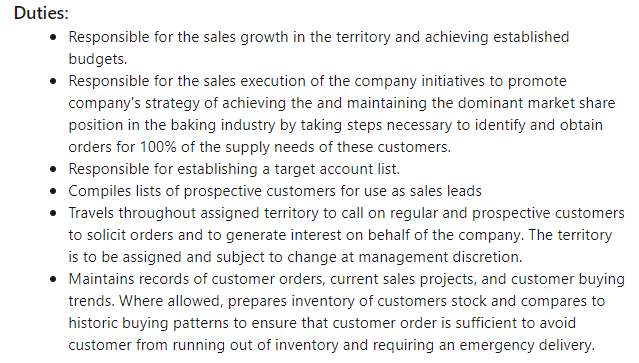
When is inside sales appropriate versus outside sales (and vice-versa)?
Although there is no “right” sales approach per se, some businesses and industries are better suited for either inside or outside sales. Here’s a quick rundown, for reference:
Inside sales is best for… |
Outside sales is best for… |
|
|
What do inside sales and outside sales have in common?
Inside sales and outside sales aren’t totally apples and oranges. The reality? Successful reps in both fields share many of the same skills that we’ve highlighted below.
Both rely heavily on technology to close deals
For remote reps, you’re going to be glued to your CRM and communications platform for most of the day.
That said, even reps responsible for closing deals in person are going to use the same technologies to communicate. Beyond internal communication, it’s safe to assume that you’ll be going through quite a few calls, emails, and texts prior to meeting someone in person.
Either way, technology allows you to keep track of your relationships and communicate with customers on their terms.
Both require thoughtful decision-making
As noted earlier, outside reps have to think on the fly in order to close deals. Inside reps have more flexibility in terms of time, but also have more prospects and leads to focus on day to day.
For example, which leads are your top priorities? Who should you reach out to next? What opportunities are on the table? Being decisive is key to moving deals forward in-person or otherwise.
Both are responsible for building customer relationships
While inside salespeople likely talk to a higher volume of customers, outside reps are more likely to “get to know” customers on an individual level. As such, both types of reps are tasked with learning and communicating customer needs and pain points.
Is it possible to move from inside sales to outside sales?
The short answer? Absolutely.
In the wake of COVID-19, we’re obviously seeing more and more outside reps adapt to inside sales.
But even so, it’s not as if a remote rep is totally incapable of meeting with a lead or prospect in person. Although it might require a bit of extra preparation, you might consider doing so if you have a prospective customer that’s local.
And for outside reps looking to transition to inside sales, they may need to spend some time acclimating themselves to the latest sales technology. If someone has the skills to sell in the field, it’s likely that they can make the transition rather smoothly (granted they’re equipped with the right tools).
Inside sales vs outside sales: Which is best for your team?
There is no one-size-fits-all approach to sales.
Regardless of which approach is “best,” it’s important that all sales reps are empowered to keep in touch with their prospects, leads, and customers.
By getting on board with a platform like RingCentral, you can better equip your inside and outside reps to be just a call (or meeting) away.
1pipedrive.com/en/blog/state-of-sales
2oxfordeconomics.com/Media/Default/Industry%20verticals/Tourism/US%20Travel%20Association-%20ROI%20on%20US%20Business%20Travel.pdf
3LinkedIn job posting: linkedin.com/jobs/view/2000059349
Originally published Oct 01, 2020, updated Jun 24, 2024


